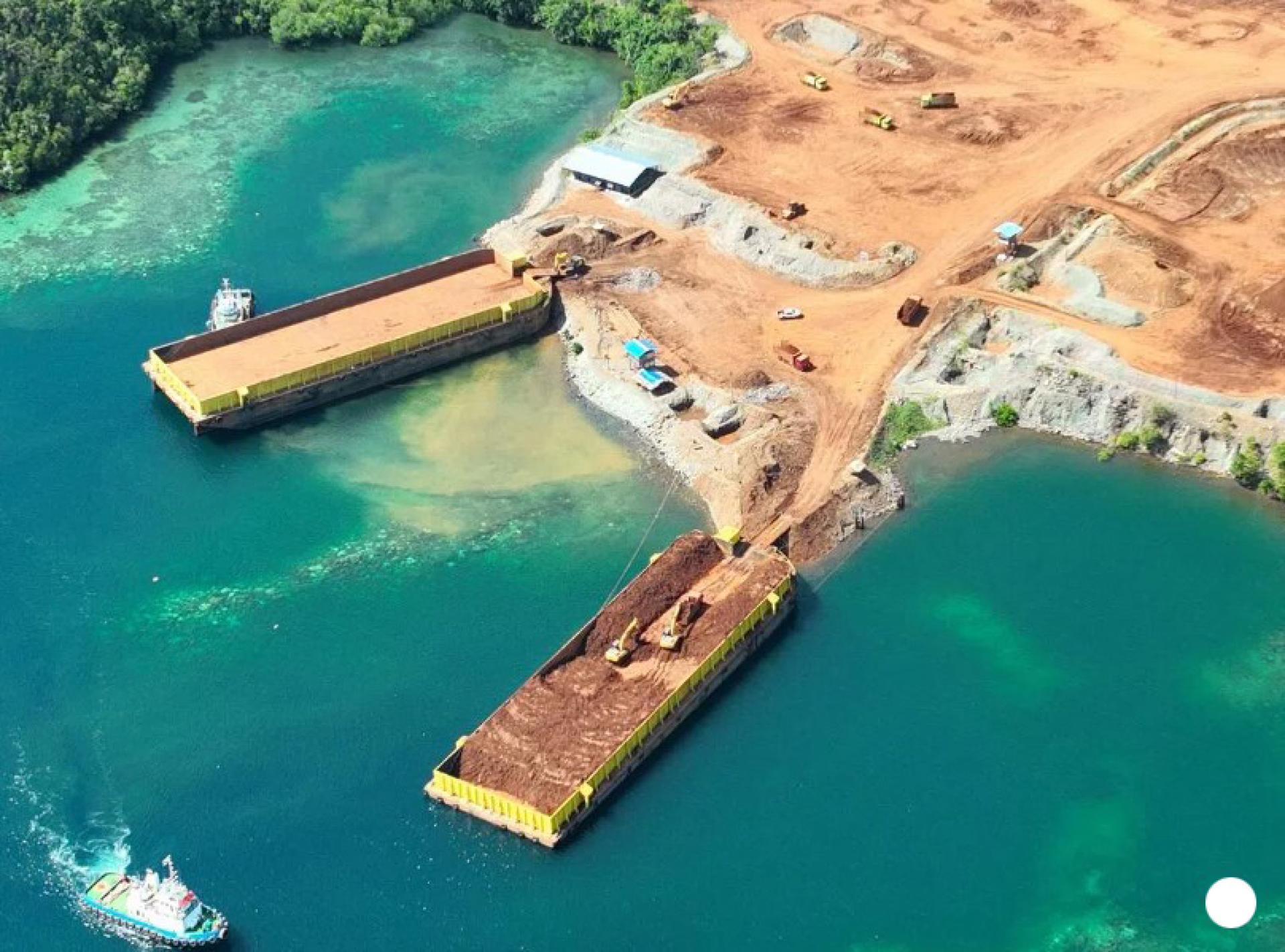(Jakarta, 26th) — Environmental organizations have warned that nickel mining is threatening Indonesia’s important marine biodiversity and coral reef ecosystems.
After environmental activists and local residents protested the environmental destruction caused by nickel mining, the Indonesian government revoked the mining licenses of four mining companies in the Raja Ampat Islands, Southwest Papua Province, this June. However, in September, one of these companies was granted permission to resume nickel mining, reasoning that the impacts could be “appropriately mitigated.”
Non-governmental organizations Auriga Nusantara and Earth Insight released a report on Thursday (September 25) warning that analysis of both recent and past mining activities in the Raja Ampat Islands reveals that nickel mining is triggering a domino effect, with damage spreading from deforestation of land to sediment runoff that is suffocating underwater coral reefs.
Manullang, executive director of Auriga Nusantara, said: "We are concerned that the destruction caused by current nickel mining activities in the Raja Ampat Islands will last for decades."
The Raja Ampat Islands are the core area of the Coral Triangle, renowned for their rich biodiversity and pristine coral reefs, making them a world-class diving destination.
However, images taken by researchers in the Raja Ampat Islands show that mining has led to forests being cleared, with sediment from the barren mountain tops turning the once-blue sea water into a murky brown. Additionally, coral bleaching has been observed near mining areas, docks, and zones affected by sediment runoff.
While climate change has caused sea temperatures to rise and coral bleaching in many parts of the world, researchers believe that the situation in the Raja Ampat Islands is not caused by climate change, as corals just 50 to 100 meters away from the study area remain healthy.
Of the 3.66 million hectares of land in the Raja Ampat Islands region, 22,000 hectares have been designated for nickel mining, most of which falls within a UNESCO-designated global geopark.
Greenpeace Indonesia reported in June this year that nickel mining has damaged more than 500 hectares of forests and vegetation in the Raja Ampat Islands.
After environmental activists and local residents protested the environmental destruction caused by nickel mining, the Indonesian government revoked the mining licenses of four mining companies in the Raja Ampat Islands, Southwest Papua Province, this June. However, in September, one of these companies was granted permission to resume nickel mining, reasoning that the impacts could be “appropriately mitigated.”
Non-governmental organizations Auriga Nusantara and Earth Insight released a report on Thursday (September 25) warning that analysis of both recent and past mining activities in the Raja Ampat Islands reveals that nickel mining is triggering a domino effect, with damage spreading from deforestation of land to sediment runoff that is suffocating underwater coral reefs.
Manullang, executive director of Auriga Nusantara, said: "We are concerned that the destruction caused by current nickel mining activities in the Raja Ampat Islands will last for decades."
The Raja Ampat Islands are the core area of the Coral Triangle, renowned for their rich biodiversity and pristine coral reefs, making them a world-class diving destination.
However, images taken by researchers in the Raja Ampat Islands show that mining has led to forests being cleared, with sediment from the barren mountain tops turning the once-blue sea water into a murky brown. Additionally, coral bleaching has been observed near mining areas, docks, and zones affected by sediment runoff.
While climate change has caused sea temperatures to rise and coral bleaching in many parts of the world, researchers believe that the situation in the Raja Ampat Islands is not caused by climate change, as corals just 50 to 100 meters away from the study area remain healthy.
Of the 3.66 million hectares of land in the Raja Ampat Islands region, 22,000 hectares have been designated for nickel mining, most of which falls within a UNESCO-designated global geopark.
Greenpeace Indonesia reported in June this year that nickel mining has damaged more than 500 hectares of forests and vegetation in the Raja Ampat Islands.
